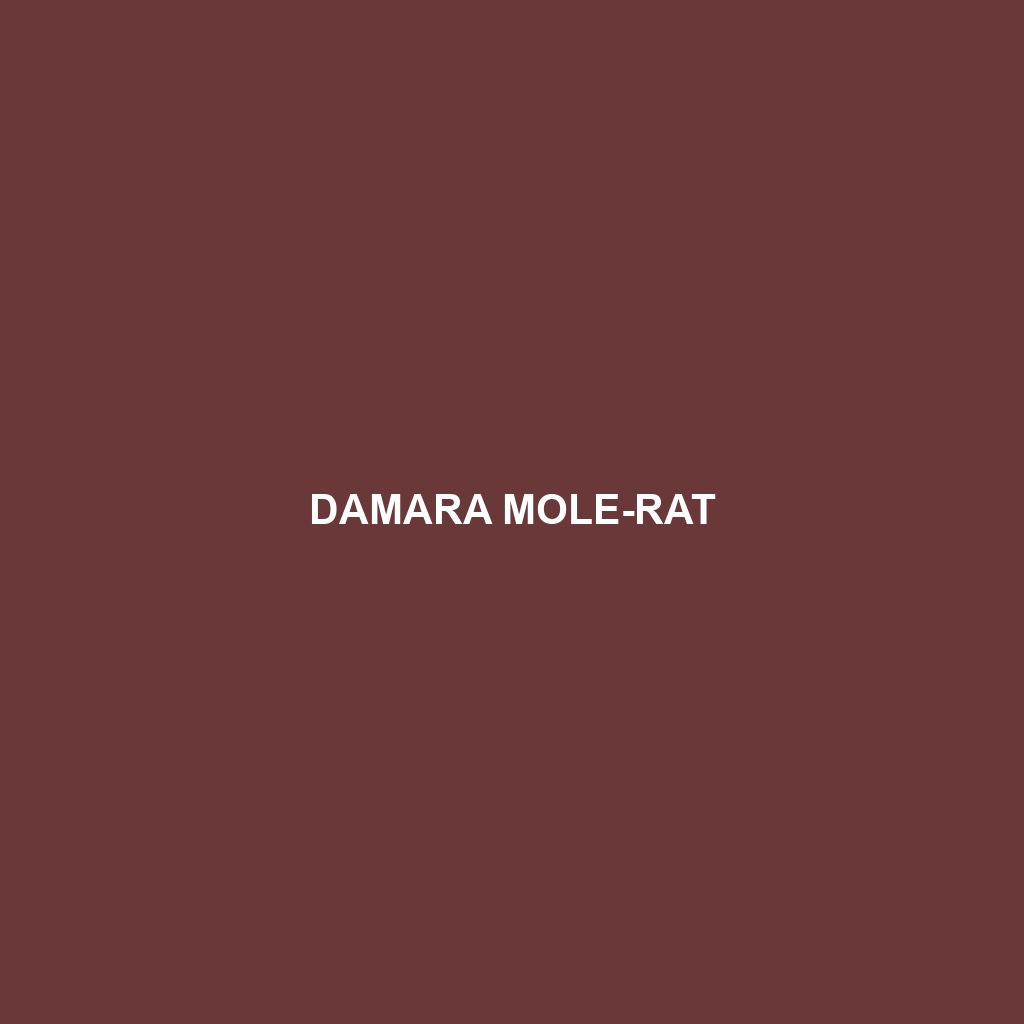Damara Mole-rat
Common Name: Damara Mole-rat
Scientific Name: Cryptomys damarensis
Habitat: The Damara Mole-rat is primarily found in the arid regions of Namibia, specifically in the central and southern parts of the country. This species inhabits sandy soils and grasslands, making them well-suited for burrowing activities. Their preferred environment includes areas with sparse vegetation, where they can build extensive tunnel systems to live and forage.
Physical Characteristics: Damara Mole-rats are medium-sized rodents, usually measuring between 20 to 30 centimeters in length. They have a stout body, short limbs, and a distinctively flattened head. Their fur is typically a combination of brown and gray, providing excellent camouflage in their natural habitat. One of their most distinctive features includes large, protruding incisors that are adapted for digging and gnawing on roots.
Behavior: These social animals are known for their complex burrow systems, often living in family groups. They exhibit fascinating behaviors including cooperative foraging and communal care for young. The Damara Mole-rat is primarily nocturnal, becoming active during the cooler hours of the night, which helps them avoid the extreme daytime temperatures of their habitat. Their burrowing habits allow them to maintain a cooler microclimate underground.
Diet: The Damara Mole-rat is herbivorous, primarily feeding on roots, tubers, and other underground parts of plants. Their diet is crucial for their survival in arid environments where food sources are limited. They possess specialized adaptations in their teeth to efficiently consume tough plant material, making them vital for the nutrient cycling of their ecosystem.
Reproduction: Reproductive habits of the Damara Mole-rat vary depending on environmental conditions, but they typically breed year-round in favorable circumstances. Females give birth to litters of 2 to 5 pups, which are born blind and hairless. Parental care is provided by both parents, and sometimes by older siblings as well, which fosters a strong social structure within colonies.
Conservation Status: The Damara Mole-rat is currently listed as ‘Least Concern’ according to the IUCN Red List, although habitat destruction and changes in land use may pose future threats to their populations. Monitoring their status is essential for ensuring the survival of this unique species.
Interesting Facts: Damara Mole-rats are remarkable for their burrowing depth, often creating extensive networks that can reach several meters underground. These complex tunnel systems not only provide shelter but also serve as a unique habitat for other organisms, highlighting their ecological importance. Their social structure is similar to that of meerkats, with a clear division of labor among colony members.
Role in Ecosystem: As primary consumers, Damara Mole-rats play a significant role in their ecosystem by aiding in soil aeration and nutrient redistribution through their digging activities. By consuming plant roots and tubers, they contribute to controlling plant populations and promoting biodiversity within their grassland habitats. Their interactions with other species also help maintain a balanced ecosystem, making them essential for ecological health.
